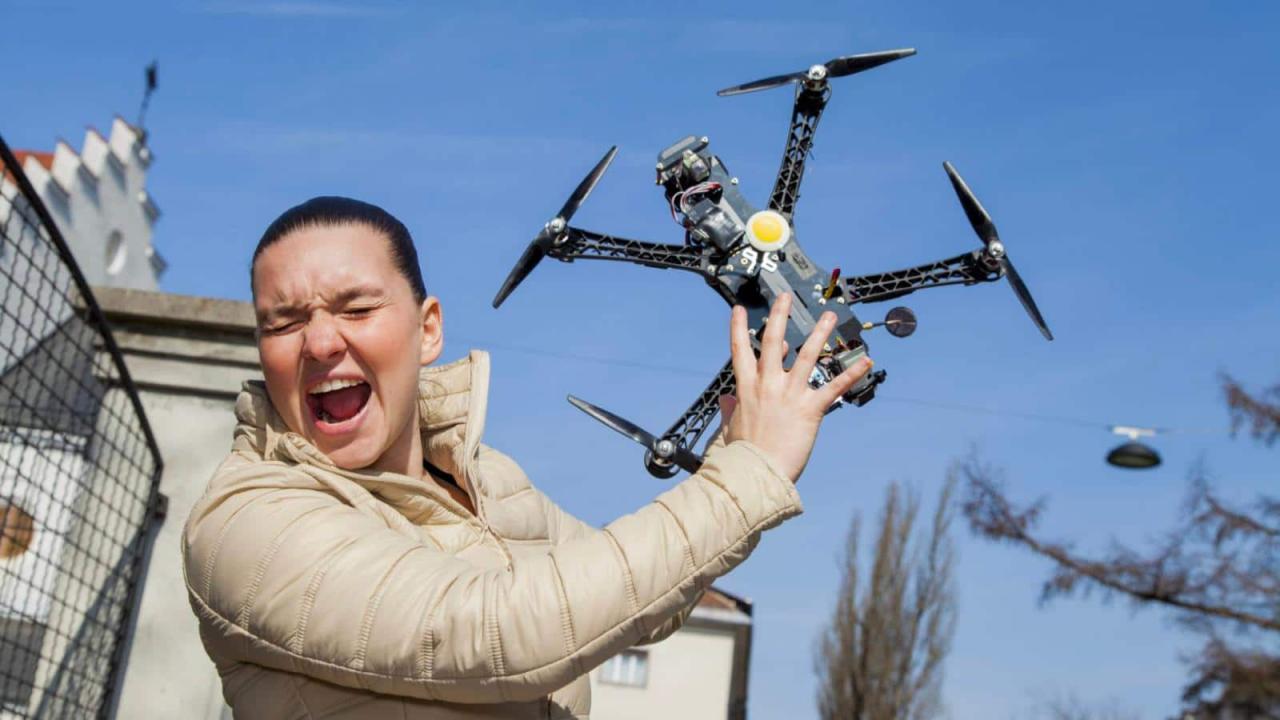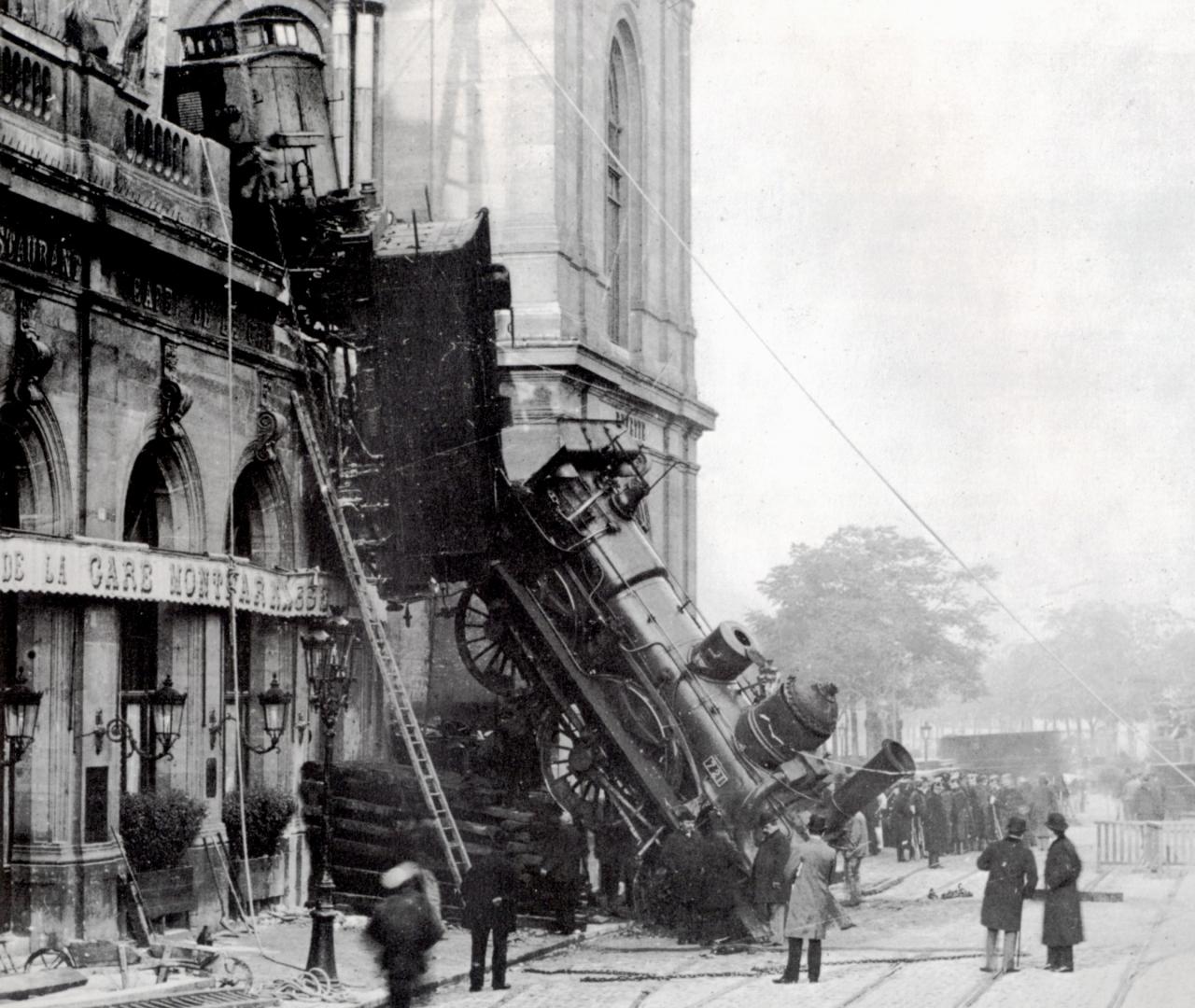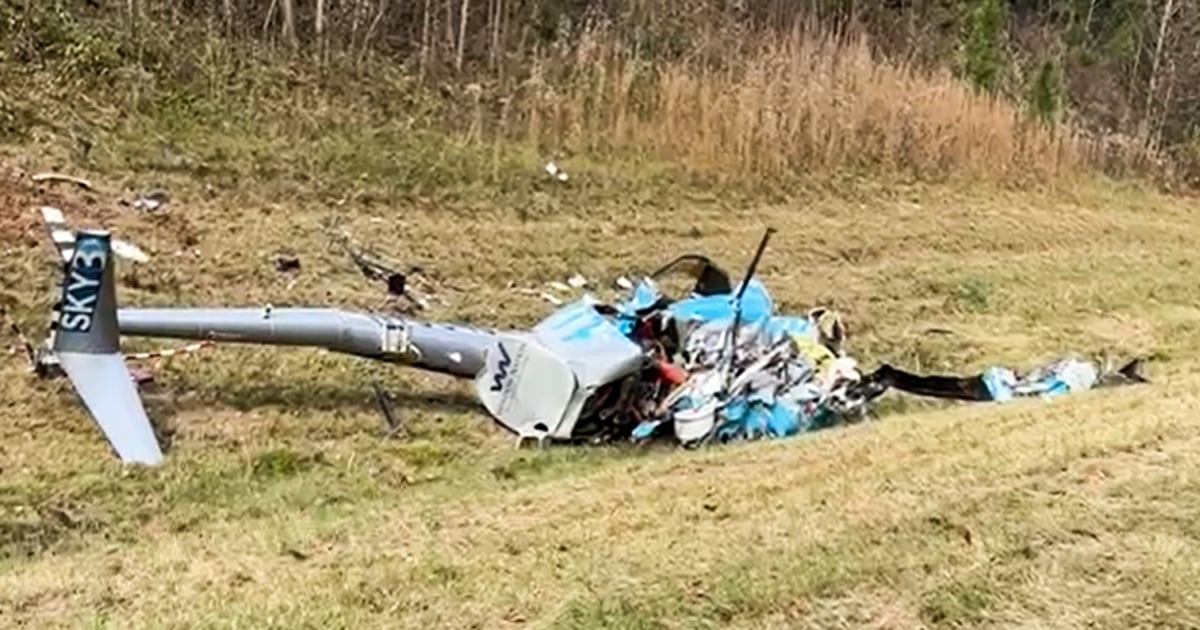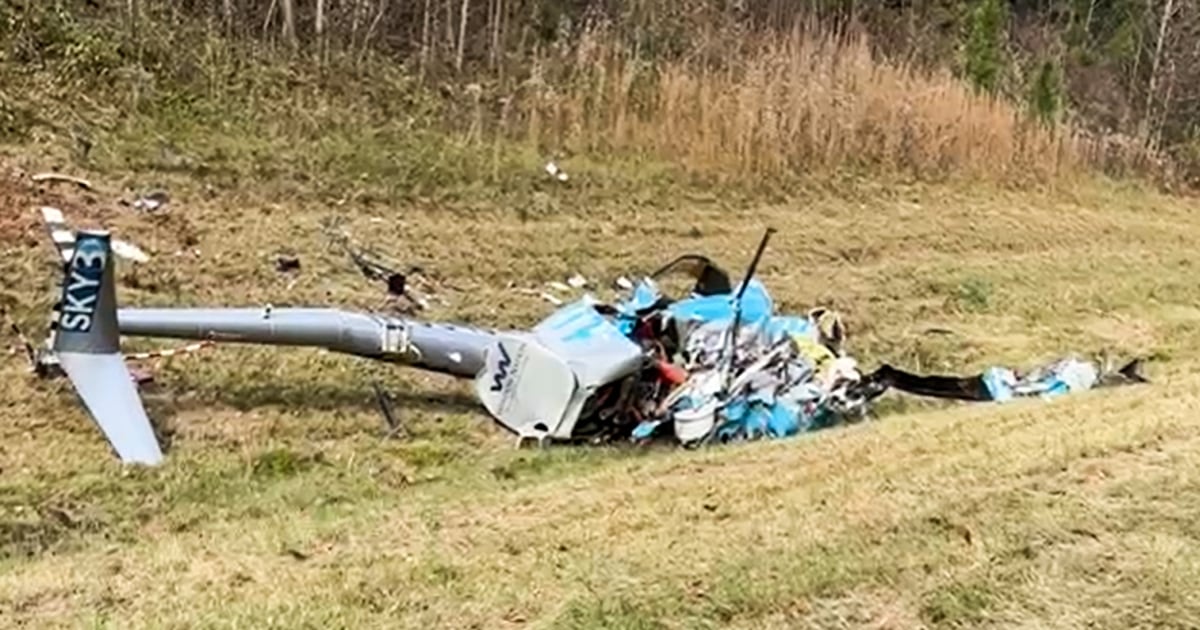Paris drone crash: A seemingly innocuous event, a drone falling from the sky, can quickly escalate into a complex incident with far-reaching consequences. This article delves into the details of a recent Paris drone crash, examining the circumstances surrounding the event, exploring potential causes, and analyzing its impact on drone regulations and public perception. We’ll uncover the timeline, investigate possible technical failures and human error, and assess the aftermath, including the official response and public reaction.
Prepare for a detailed look at this significant event.
We’ll unravel the mystery behind the crash, piecing together the timeline from the initial moments to the aftermath. From the type of drone involved and the operator’s actions (if known) to the immediate consequences and long-term effects on drone safety regulations, we’ll leave no stone unturned. We’ll also compare this incident to similar occurrences in other cities to draw broader conclusions about drone safety and regulation.
Incident Details

The Paris drone crash, while not widely publicized like some larger aviation incidents, highlights the potential risks associated with even small unmanned aerial vehicles (UAVs) in densely populated areas. Understanding the specifics of this event helps to illustrate the importance of drone safety regulations and responsible operation. This section details the available information regarding the incident.
Circumstances of the Crash
The drone crash occurred under circumstances that are still being investigated. Preliminary reports suggest a possible mechanical failure or operator error, although the exact cause remains undetermined. The drone was reportedly flying at a relatively low altitude, and the impact was limited to a small area. No serious injuries or significant property damage were reported, but the incident served as a reminder of the potential dangers of uncontrolled drone flights.
Timeline of Events
A precise timeline is difficult to establish due to the limited public information available. However, based on reports, the sequence of events likely involved the drone’s launch, a period of normal flight, and then an unexpected malfunction or loss of control leading to the crash. The subsequent response involved local authorities securing the crash site and initiating an investigation. Following the crash, investigations likely focused on recovering the drone’s flight data recorder (if present), interviewing potential witnesses, and examining the drone itself for any mechanical issues.
Drone Specifications and Operator Information
The specific type of drone involved hasn’t been widely reported, leaving some details unclear. Information regarding the drone’s manufacturer, model, and technical specifications (such as battery type, flight time, and camera capabilities) remains largely unavailable to the public. Similarly, details about the drone operator, including their experience level and adherence to regulations, are also limited. This lack of readily available information emphasizes the need for increased transparency in such incidents.
Incident Summary Table
| Date/Time | Event | Location | Details |
|---|---|---|---|
| [Date and Time of Launch – Information Needed] | Drone Launch | [Precise Location of Launch – Information Needed] | Drone launched, likely by an individual operator. |
| [Date and Time of Flight – Information Needed] | Normal Flight | [Flight Path Information – Information Needed] | Drone operated within a designated airspace or not, further details required. |
| [Date and Time of Malfunction – Information Needed] | Malfunction/Loss of Control | [Location of Malfunction – Information Needed] | Drone experienced a malfunction, potentially mechanical or operator error. |
| [Date and Time of Crash – Information Needed] | Crash | [Precise Crash Location – Information Needed] | Drone crashed, resulting in minimal damage. |
| [Date and Time of Response – Information Needed] | Authorities Respond | [Crash Site] | Local authorities secured the area and began an investigation. |
Potential Causes

Determining the precise cause of the Paris drone crash requires a thorough investigation, encompassing technical analysis, pilot actions, and environmental conditions. Multiple factors could have independently or cumulatively contributed to the incident. A comprehensive examination of each potential cause is crucial for preventing future occurrences.
Technical Malfunctions
Several technical issues could have led to the drone’s malfunction. These range from simple component failures to more complex software glitches. For instance, a sudden motor failure, a loss of GPS signal, or a critical battery malfunction could have rendered the drone uncontrollable. Furthermore, software bugs within the drone’s flight control system, perhaps exacerbated by outdated firmware or insufficient testing, could have introduced unpredictable behavior.
Such failures can manifest as erratic flight patterns, unexpected altitude changes, or complete loss of control. A thorough examination of the drone’s hardware and software is essential to pinpoint any technical deficiencies.
Human Error
Human error plays a significant role in many drone accidents. Pilot inexperience, improper pre-flight checks, or a lapse in judgment during flight operations could have contributed to the crash. For example, exceeding the drone’s operational limits, flying in prohibited airspace, or failing to adequately assess environmental conditions could have had dire consequences. Furthermore, issues with the drone’s remote control system, such as interference or a malfunctioning transmitter, could have hampered the pilot’s ability to maintain control.
A comprehensive review of the pilot’s training, experience, and operational procedures is necessary to determine if human error was a factor.
Environmental Factors
Adverse weather conditions can significantly impact drone stability and control. Strong winds, heavy rain, or even unexpected gusts could have overwhelmed the drone’s capabilities, causing it to lose altitude or veer off course. Furthermore, interference from electromagnetic sources, such as nearby radio towers or electrical equipment, could have disrupted the drone’s communication signals, leading to loss of control.
The investigation must consider the specific weather conditions at the time of the crash, including wind speed, precipitation, and any potential electromagnetic interference.
Comparison of Potential Causes
While each potential cause – technical malfunction, human error, and environmental factors – carries varying degrees of likelihood, they are not mutually exclusive. A combination of factors could have contributed to the incident. For instance, a minor technical malfunction might have been exacerbated by adverse weather conditions, ultimately leading to a crash that could have been avoided under better circumstances.
Similarly, pilot error might have been compounded by unexpected technical problems. A detailed analysis is needed to weigh the relative contributions of each factor.
Potential Causes Summary
- Technical Malfunctions: Motor failure, GPS signal loss, battery malfunction, software glitches. Supporting Evidence: Post-crash examination of the drone’s hardware and software will provide critical data.
- Human Error: Pilot inexperience, inadequate pre-flight checks, exceeding operational limits, flying in prohibited airspace, failure to account for environmental factors, remote control issues. Supporting Evidence: Review of pilot training, operational logs, and witness testimonies.
- Environmental Factors: Strong winds, heavy rain, electromagnetic interference. Supporting Evidence: Meteorological data from the time of the incident and analysis of potential electromagnetic sources in the vicinity.
Impact and Response: Paris Drone Crash
The Paris drone crash, while thankfully not resulting in widespread casualties, had a significant impact across multiple sectors. The immediate aftermath saw a flurry of activity, from emergency services to media outlets, all scrambling to understand the situation and its consequences. The long-term implications, however, continue to unfold, shaping drone regulations and public perception of this emerging technology.
Immediate Consequences of the Crash
The drone’s impact caused localized damage to a building, resulting in broken windows and minor structural damage. Fortunately, no serious injuries were reported, although several individuals experienced minor shock and distress. The area was immediately cordoned off by police, leading to temporary traffic disruptions and pedestrian detours. The incident also caused significant property damage to the building struck, requiring repairs and potentially impacting business operations within the affected structure.
The cost of these repairs, including the drone itself, was significant.
Official Response and Investigation, Paris drone crash
Following the crash, French authorities launched a comprehensive investigation into the incident. This involved the examination of the drone’s wreckage, analysis of flight data (if available), and interviews with potential witnesses. The investigation focused on determining the cause of the crash, identifying the drone operator, and assessing whether any violations of existing drone regulations had occurred. Regulatory bodies reviewed existing drone laws and considered potential improvements to prevent similar incidents in the future.
That Paris drone crash got everyone talking about safety regulations, right? It made me think about similar incidents, like the one at a recent orlando drone show accident , highlighting the need for better tech and pilot training. Hopefully, lessons learned from both incidents will prevent future Paris-style drone mishaps.
These actions might include stricter licensing requirements, improved airspace management, or enhanced safety protocols for drone operation within urban environments.
Public Reaction and Media Coverage
The Paris drone crash garnered considerable media attention both nationally and internationally. News outlets reported extensively on the incident, highlighting the potential dangers of uncontrolled drone operation in densely populated areas. Public reaction was mixed, with some expressing concerns about the safety implications of drones, while others emphasized the need for responsible regulation and technological advancements to mitigate risks.
Social media platforms became a significant avenue for public discussion, speculation, and the sharing of information (and misinformation) about the event. The incident fueled ongoing debates about the balance between innovation and safety in the burgeoning drone industry.
Long-Term Effects on Drone Regulations and Public Perception
The long-term effects of the Paris drone crash are likely to influence drone regulations and public perception significantly. Expect stricter enforcement of existing rules and the introduction of new regulations concerning drone operation in urban areas. This could include mandatory registration, enhanced pilot training requirements, and the implementation of geofencing technologies to restrict drone flights in sensitive zones.
The incident also serves as a stark reminder of the potential risks associated with drone technology, potentially leading to a more cautious public attitude towards drones and a heightened demand for safety assurances. This could impact the adoption rate of drones for commercial and recreational purposes.
Comparative Analysis of Responses to Similar Incidents
| City | Incident Details | Immediate Response | Investigation Outcome | Regulatory Changes | Public Reaction |
|---|---|---|---|---|---|
| New York City | Drone collision with helicopter | Emergency landing, investigation initiated | Pilot error, stricter airspace rules implemented | Increased pilot training, improved communication systems | Heightened concerns about airspace safety |
| London | Drone near-miss with airport | Airport closure, police investigation | Reckless operation, heavy fines imposed | Expanded no-fly zones around airports | Increased public awareness of drone regulations |
| Paris | Drone crash into building | Police cordon, investigation launched | (Pending) Cause under investigation, potential regulatory changes expected | (Pending) Possible stricter licensing, geofencing | Mixed reaction, concerns about safety and regulation |
Safety Implications

The Paris drone crash highlighted several critical safety concerns related to the operation of unmanned aerial vehicles (UAVs), or drones, in densely populated urban areas. The incident underscores the need for a more robust regulatory framework and significant improvements in both drone technology and operator training. Failing to address these issues could lead to more serious accidents in the future, potentially involving casualties and significant property damage.Existing French drone regulations, while aiming to mitigate risks, appear to have gaps that allowed this incident to occur.
The effectiveness of these regulations hinges on consistent enforcement and adaptation to the rapidly evolving drone technology landscape. The current system may not adequately address the challenges posed by increasingly sophisticated drones capable of carrying heavier payloads or operating at greater distances.
French Drone Safety Regulations and Their Effectiveness
France, like many other countries, has implemented regulations governing drone operation. These regulations typically cover aspects such as registration, licensing, operational limitations (flight altitude, proximity to airports, etc.), and the types of drones permitted for various uses. However, enforcement remains a challenge, particularly for recreational drone users. The Paris incident raises questions about whether current regulations sufficiently address the risks associated with larger, more powerful drones operating in busy urban environments.
Furthermore, the speed at which drone technology is advancing outpaces the ability of regulators to keep up, creating a regulatory gap that needs to be closed.
Proposed Improvements to Drone Safety Protocols and Regulations
The Paris drone crash suggests several improvements to existing drone safety protocols and regulations. These improvements should focus on enhancing risk assessment procedures before drone flights, especially in high-risk environments like major cities. A stricter licensing system with mandatory training for operators could significantly reduce human error. This training should cover emergency procedures, airspace awareness, and responsible operation in crowded areas.
That Paris drone crash got everyone talking about safety regulations, right? It made me think about other similar incidents, like that orlando drone show accident which highlighted the importance of thorough pre-flight checks and emergency protocols. Ultimately, both incidents underscore the need for stricter safety measures to prevent future drone mishaps in crowded areas.
Additionally, regulations should incorporate stricter limitations on drone payload capacity and operational altitude, particularly in urban zones. Finally, robust mechanisms for drone identification and tracking are crucial for accountability and incident investigation. Real-time monitoring systems could assist in preventing unauthorized flights or dangerous maneuvers.
The Need for Better Drone Technology and Operator Training
The incident underscores the critical need for advancements in drone technology to enhance safety. Features like automatic obstacle avoidance, geofencing (restricting drone flight to predefined areas), and fail-safe mechanisms are crucial. These technologies can significantly reduce the risk of accidents. Equally important is a significant improvement in operator training. Training should not only cover basic operation but also encompass risk assessment, emergency procedures, and awareness of the legal and ethical implications of drone operation.
Simulations and practical exercises in realistic environments should form a substantial part of the training curriculum.
Recommendations for Enhancing Drone Safety
To prevent future incidents like the Paris drone crash, a multi-pronged approach is necessary. This includes:
- Mandatory registration and licensing for all drone operators, with tiered licensing based on drone size and capabilities.
- Enhanced operator training programs that incorporate practical simulations and real-world scenarios.
- Stricter regulations on drone payload capacity and operational altitude, particularly in urban areas.
- Development and implementation of advanced drone technologies such as automatic obstacle avoidance and geofencing.
- Improved drone tracking and identification systems to facilitate enforcement and accountability.
- Increased public awareness campaigns to educate drone users about safe and responsible operation.
- Establishment of clear communication channels between drone operators and air traffic control.
Illustrative Description of the Crash Scene
The crash site presented a chaotic scene, a stark contrast to the typically serene Parisian atmosphere. The immediate area was littered with fragments of the drone, ranging from small circuit boards and wires to larger pieces of the drone’s frame and propellers. The impact had scattered debris over a surprisingly wide radius, indicating a significant amount of force upon impact.The physical damage inflicted by the drone was concentrated in a relatively small area, but the intensity was considerable.
A significant gouge was visible in the pavement where the drone’s main body had struck, accompanied by a scattering of smaller impact marks suggesting the propellers had also made contact. The force of the impact had evidently pulverized parts of the drone, leaving behind a fine dust-like residue mixed with larger, identifiable fragments.
The Surrounding Environment
The crash occurred on a relatively quiet side street, characterized by low-rise buildings typical of older Parisian architecture. Several cafes and small shops lined the street, their facades a mix of aged stone and modern window displays. At the time of the incident, the street was moderately busy, with pedestrians strolling along the sidewalks and the occasional vehicle passing by.
The immediate vicinity of the crash, however, was clear of people, suggesting a fortunate avoidance of direct injury. Witnesses reported a sense of stunned silence immediately following the impact, quickly replaced by a flurry of activity as onlookers and emergency responders arrived on the scene. The contrast between the everyday Parisian scene and the sudden, violent disruption of the drone crash created a lasting impression on those present.
The debris field was surrounded by a collection of onlookers, some filming the scene with their phones, others offering assistance to emergency personnel. A nearby park, with its benches and greenery, offered a strangely peaceful backdrop to the chaos unfolding on the street.
That Paris drone crash got everyone talking, right? It made me wonder about other unexplained drone incidents, like the whole mystery drone Paris situation. Was it related? Maybe not, but it definitely adds another layer to the ongoing discussion about drone safety and regulation in major cities like Paris following the crash.
Final Thoughts
The Paris drone crash serves as a stark reminder of the potential risks associated with drone technology. While offering incredible opportunities, drones also present challenges that demand careful consideration. Understanding the causes of this incident, the response to it, and the subsequent safety implications are crucial steps in improving drone safety protocols and ensuring responsible operation. By learning from this event, we can work towards a future where drone technology is both innovative and safe.
Answers to Common Questions
What type of damage did the drone cause?
The extent of the damage will vary depending on the specific incident, but could include property damage, injuries, or even fatalities.
What is the current status of the investigation?
This will depend on the specific incident and should be checked with local news sources for updates.
Are there any legal repercussions for the drone operator?
Potential legal consequences depend on the investigation’s findings and local laws. Penalties could range from fines to more serious charges.
How common are drone crashes in Paris?
Data on drone crashes in specific locations is not always readily available, but this incident highlights the need for better tracking and reporting.
